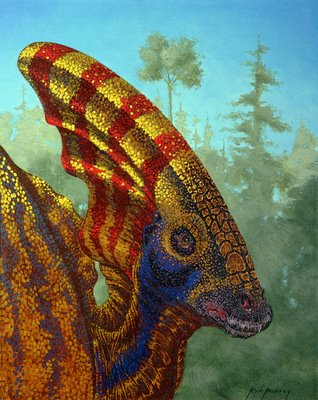 Ever wonder what a Parasaurolophus sounded like? Hear it here:
Ever wonder what a Parasaurolophus sounded like? Hear it here:http://www.sandia.gov/media/dinosaur.htm
(click on the one of the items in the left column to hear the dinosaur.)
----> ---> ----->
The study of dinosaur vocalization began after the discovery in August 1995 of a rare skull fossil measuring about 4.5 feet long. The dinosaur had a bony tubular crest that extended back from the top of its head. Many scientists have believed the crest, containing a labyrinth of air cavities and shaped something like a trombone, might have been used to produce distinctive sounds.
As expected, based on the structure of the crest, the dinosaur apparently emitted a resonating low-frequency rumbling sound that can change in pitch. Each Parasaurolophus probably had a voice that was distinctive enough to not only distinguish it from other dinosaurs, but from other Parasaurolophuses.



No comments:
Post a Comment